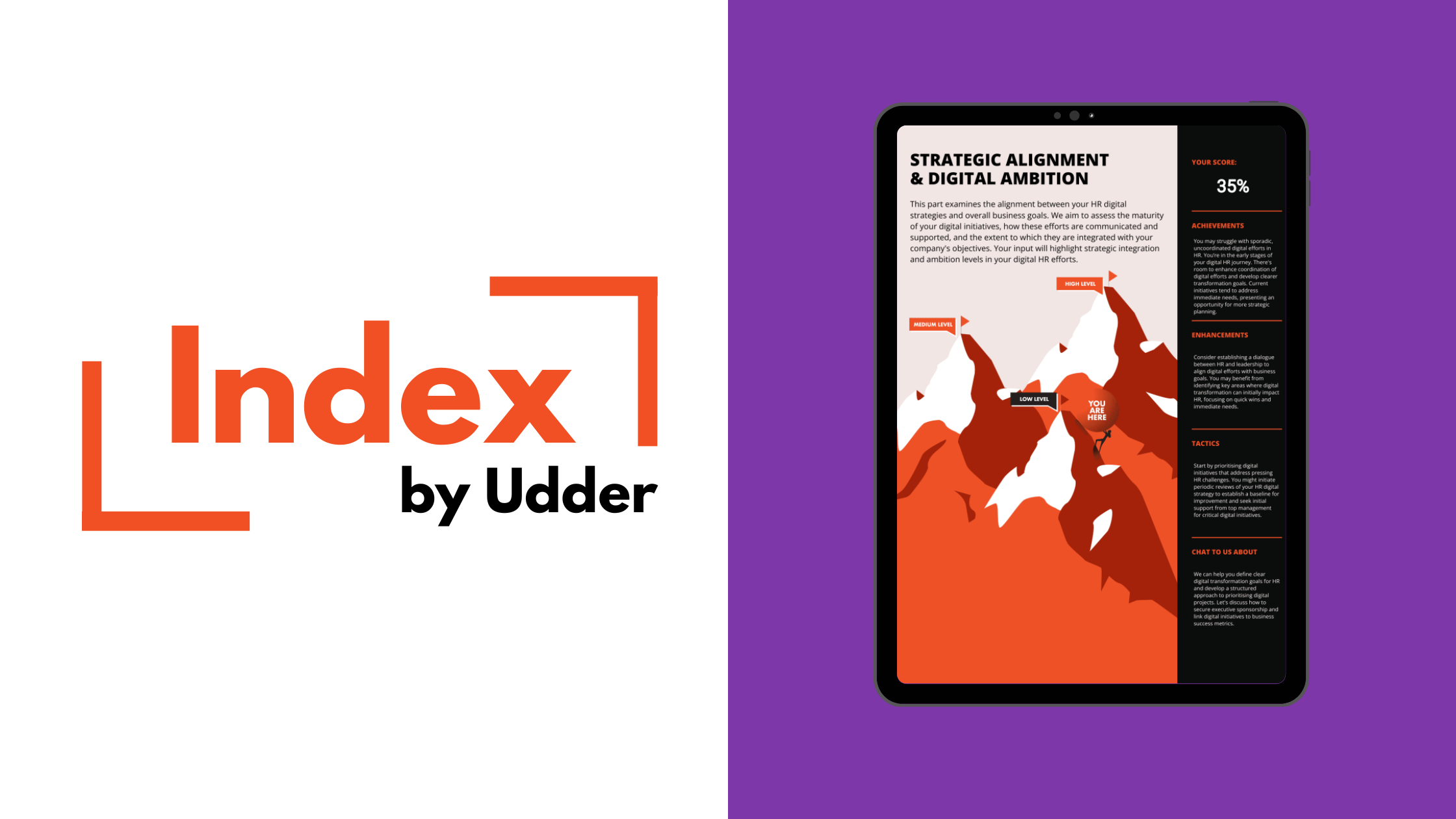HR leaders frequently encounter a familiar challenge when planning digital transformation: knowing where to start. While the pressure to transform is clear, the path forward isn't always obvious. The key to successful transformation lies not in rushing to implement new technology but in first understanding your current digital maturity and how it aligns with business objectives.
Why Digital Maturity Matters
Digital maturity in HR goes beyond having modern technology. It's about how effectively your function leverages digital capabilities to support business goals. A clear understanding of your digital maturity helps:
- Identify gaps between current capabilities and business needs
- Make informed decisions about technology investments
- Focus transformation efforts where they'll have the most impact
- Build realistic, achievable transformation roadmaps
- Maintain alignment between HR initiatives and business strategy
Key Areas of Assessment
When evaluating HR digital maturity, several key areas deserve attention:
Strategic Alignment: How well do your HR digital initiatives support broader business objectives? This includes examining how HR technology decisions align with business strategy and whether digital investments drive meaningful business outcomes.
Process Effectiveness: Are your current processes helping or hindering progress? Assessment should look at workflow efficiency, automation opportunities, and how well processes support both HR teams and employees.
Technology Integration: Beyond individual tools, how well do your systems work together? This includes examining data flow between systems, user experience across platforms, and the overall effectiveness of your technology ecosystem.
Team Capabilities: Does your team have the skills to leverage technology effectively? Understanding capability gaps helps prioritise training and development needs.
Data Usage: How effectively do you use HR data to inform decisions? This includes examining data quality, accessibility, and whether insights actually drive business decisions.
Building on Assessment Insights
A thorough digital maturity assessment provides the foundation for meaningful transformation. Use these insights to:
Set Realistic Goals: Understanding your starting point helps set achievable transformation goals that build on existing strengths while addressing key gaps.
Prioritise Effectively: Clear insight into your current state helps focus resources where they'll have the greatest impact, rather than trying to transform everything at once.
Build Better Business Cases: Objective assessment data strengthens the case for digital investments by clearly showing where and how they'll add value.
Create Sustainable Change: When you understand your digital maturity, you can plan changes that your organisation can actually absorb and sustain.
Maintaining Momentum
Digital transformation is an ongoing journey, not a destination. Regular assessment helps ensure continued alignment between HR capabilities and business needs. This includes:
- Periodically reviewing digital maturity levels
- Adjusting priorities based on business changes
- Continuing to build digital capabilities
- Measuring progress against clear benchmarks
- Maintaining dialogue with stakeholders
Moving Forward
Understanding your HR function's digital maturity is the foundation for meaningful transformation. Whether you're just starting your digital journey or looking to optimise existing capabilities, regular assessment helps ensure your efforts stay aligned with business goals and deliver real value.
If you're interested in evaluating your HR function's digital maturity, our Index assessment tool can help provide objective insights in just 20 minutes.


